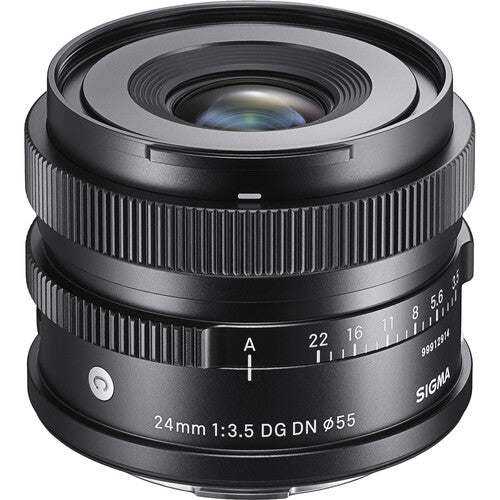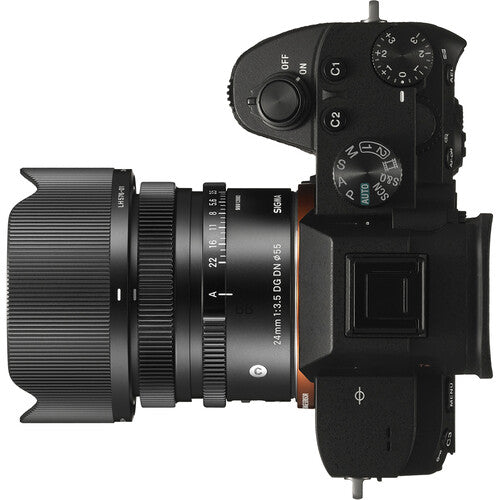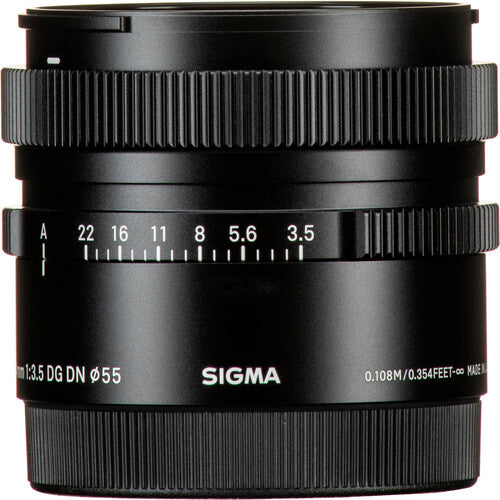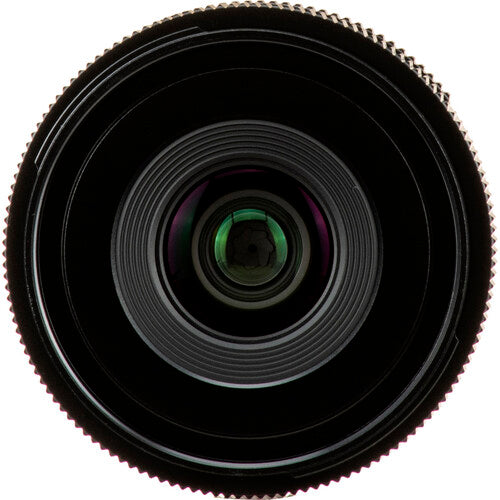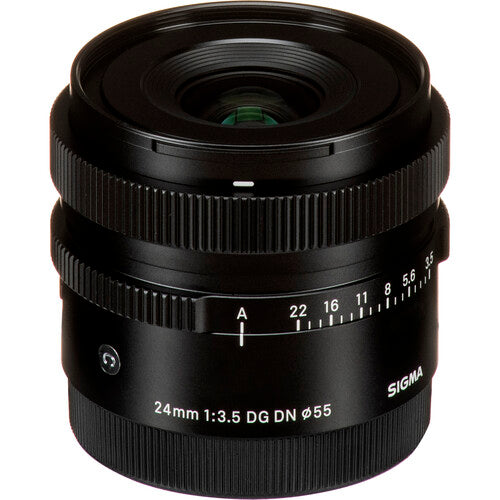Product Description
Clearance item: Lens is boxed, working with full warranty in as new condition. It has a non-branded lens cap.
Sigma 24mm f3.5 DG DN Contemporary Lens - Sony E
- Full-Frame Format | f/3.5 to f/22
- 1:2 Magnification, 4.25" Min. Focus
- Stepping Motor AF System
- Dust- and Splash-Resistant Construction
- Rounded 7-Blade Diaphragm
An ultra-wide prime with an emphasis on portability, the 24mm f/3.5 DG DN Contemporary Lens, from Sigma, is a versatile and highly compact lens well-suited to a variety of shooting tasks. Its sleek profile makes it ideal for walkaround shooting, especially for hiking or travel landscapes, as well as street and reportage applications. Distinguishing itself from other wides, too, it features a 1:2 maximum magnification ratio and 4.25" minimum focusing distance for working with close-up subjects. Its optical design features both aspherical and low dispersion glass elements, which suppress a variety of aberrations and distortions for well-controlled and accurate rendering. Also, a Super Multi-Layer Coating helps to reduce ghosting and flare for improved colour fidelity and contrast.
In regard to focusing, this lens uses a stepping motor for quick and quiet AF performance that suits both photo and video applications. As an I Series lens, too, this lens features a manual aperture ring and all-metal barrel constriction for enhanced tactility. Additionally, there is a rounded seven-blade diaphragm for smooth bokeh quality and the lens housing is also weather-sealed to suit working in inclement conditions.
As part of the Contemporary line within Sigma's Global Vision series, this lens is designed to achieve a balance between convenience and performance, and meshes a compact, lightweight build and versatile handling with notable optical attributes.
I Series lens emphasizes a sleek and stylish physical design that is built to the same operational standards of Sigma's Cine lenses, including a mechanical aperture ring, knurled metal components, and various switches and tactile controls for intuitive operation.
Ultra-wide-angle 24mm lens is designed for full-frame Sony E mirrorless cameras, however can also be used with APS-C models where it provides a 36mm equivalent focal length.
Modest f/3.5 maximum aperture helps to maintain an especially compact and lightweight physical profile.
One Special Low Dispersion (SLD) element markedly reduces chromatic aberrations and colour fringing for improved clarity and colour accuracy.
Three aspherical elements help to control distortion and spherical aberrations for a high degree of sharpness and accurate rendering.
A Super Multi-Layer Coating has been applied to lens elements in order to minimize lens flare and ghosting and contribute to producing contrast-rich and colour-neutral imagery, even in backlit conditions.
Maximum magnification of 1:2 pairs with a 4.25" minimum focusing distance for unique close-up shooting capabilities.
Integrated stepping motor realizes smooth and quiet autofocus, which is further complemented by an internal focusing design to promote greater responsiveness.
Manual aperture ring includes an 'A' position for camera-based aperture selection.
Rounded seven-blade diaphragm contributes to a smooth and pleasing bokeh quality.
Brass bayonet affords improved mounting accuracy and rigidity and rubber sealing is incorporated in the mount's design to render it dust- and splash-resistant.
Included LCF55-01M magnetic lens cap attaches directly to the front of the lens and is compatible with the optional CH-11 Lens Cap Holder.
For full specifications click Here

